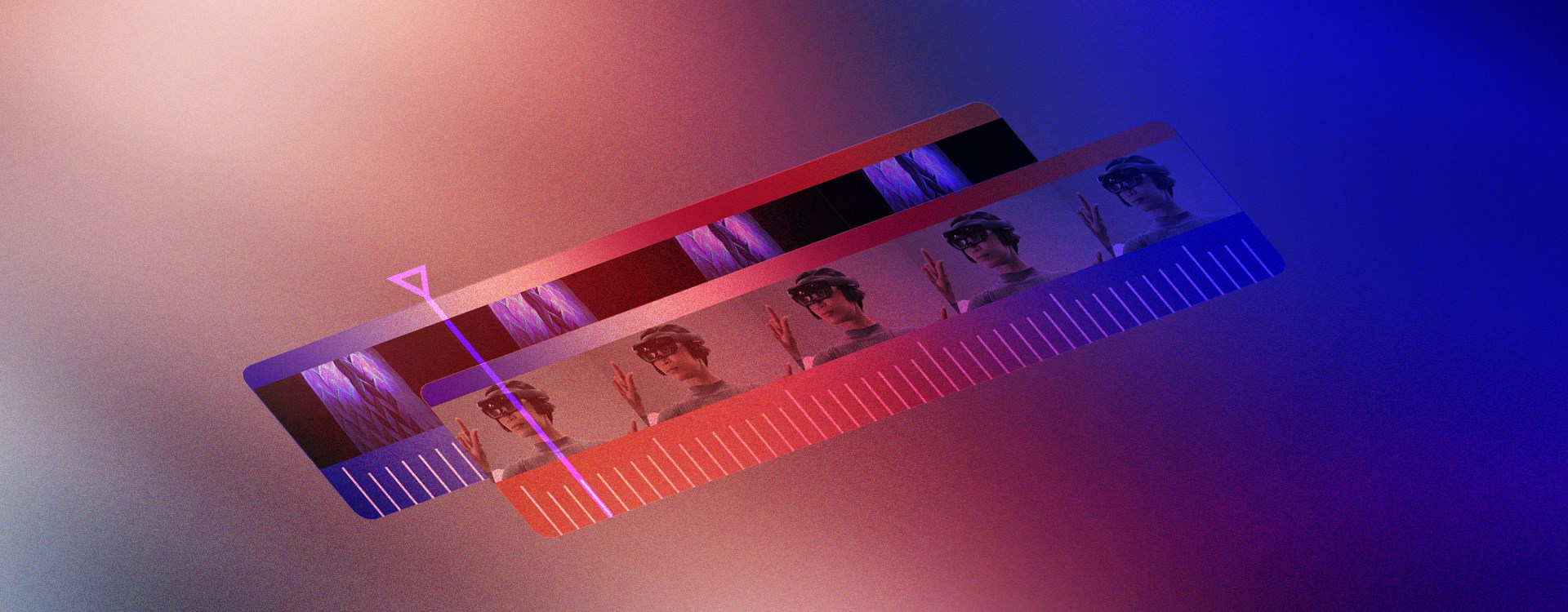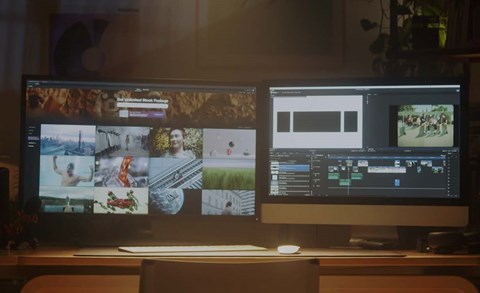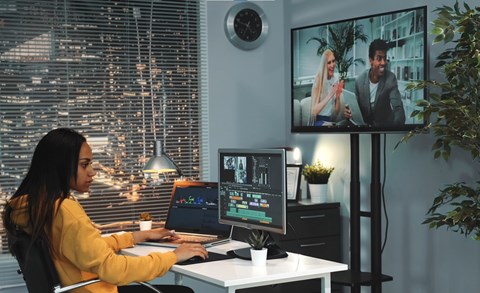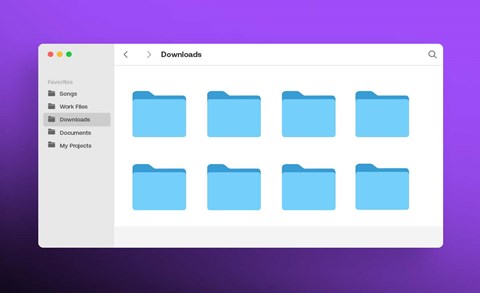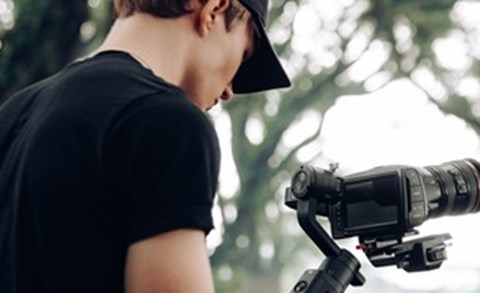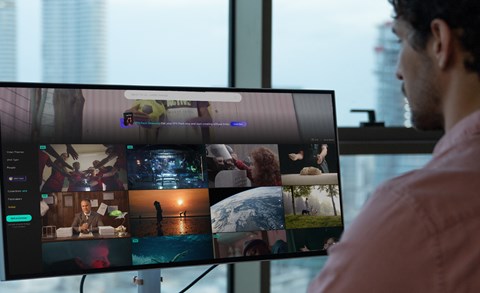A cut is just a cut, right? You choose the frame that feels right, select your blade tool, then click - simple as that. But what if you also wanted to enhance emotion, develop character or convey information through just the use of that blade tool. What if you wanted to portray the passage of time? Wanted to reveal an interesting relationship between different shots? Wanted to surprise the viewer? Excite the viewer? Provide relief for the viewer?
Like the painter's brush or the writer's pencil, the editor's blade can't do the job all on its own. It takes an attentive artist to use the tool in just the right way to infuse the work with meaning. So here, we will discuss 10 different editing ideas to work into your videos. You can apply each of these in tons of different ways for your own unique creative visions.
Hard cut
The humble hard cut, or standard cut, is easily one of the most commonly applied editing techniques in film and video. It involves a simple cut between 2 clips - either in the one scene/location or between scenes/locations.

No extravagant transitions or effects are needed, and in fact, that's really the point of a good hard cut. You've probably heard before that "good editing goes unnoticed," so a well-executed hard cut helps you achieve exactly that. When done right, it doesn't draw attention to itself, allowing the viewer to remain immersed in your video. Here's a typical video use of the hard cut, created by editing stock footage, using royalty-free music and SFX from Artlist (as is the case in all the videos in this blog).
Having said all this, a hard cut isn't necessarily easy just because it's at the heart of editing. If you don't follow the rules of continuity, for example, the sudden and immediate change from one shot to another can be jarring.
Pro tip: Avoid cutting to any very similar-looking shot. It could look like a jump cut (which you'll read about shortly) and can draw attention to continuity errors. In the example above, notice that each new cut is taken from quite a different angle so that small continuity errors are overshadowed by the shot change.
J-cuts
J-cuts (along with our next technique, L-cuts) belong to a category of editing technique called split edits. These involve cutting the audio and the video of a clip at different times. In the case of J-cuts, this means bringing in the audio of your following clip before you finish watching the first. This creates the shape of a "J" on a timeline, earning it the name.

So why would you want to do that? Is it not off-putting for the viewer to hear something they can't yet see? Hopefully, the example below shows that the opposite can be true if it's done well. By allowing the audio of your next clip to come in early, you can make a move from one shot to the next feel more organic, as if the 2 are bonded together somehow. From a storytelling perspective, J-cuts also provide forward momentum and help reiterate cause and effect. In this instance, the J-cut highlights the connection between our character reading the schedule and then finding herself at the right platform as her train arrives.
It should be said that J-cuts can be used for much more than just connecting visuals in this way. In fact, they are used all the time within dialogue scenes to help depict natural flowing conversation. Without them, you would have a cut, followed by a line of dialogue, followed by a cut, followed by dialogue etc. So it can end up feeling very mechanical. However, once you start listening out for them, you'll be surprised just how common J-cuts really are!
L-cuts
So if a J-cut has audio from the following clip coming in early, forming a "J" shape on your timeline, you can maybe guess what an L-cut does. This is when the audio from the first clip carries over into the next.

Like J-cuts, L-cuts also enhance the sense of progression and pace you want in your videos and generally make your edit feel like a cohesive whole rather than a collection of clips placed next to one another.
If, in the video above, the plane's audio was cut at the same time as the video, it would likely feel too abrupt. While if the video played all the way until the audio stopped, followed by a hard cut to the terminal, it would probably feel slow and a little boring. So basically, while they won't work in every instance, you should always be looking for split edit opportunities in your picture editing workflow.
Once you start listening out for them, you'll be surprised just how common split edits really are! Pay close attention to this example from “Inside Llewyn Davis” and count how often J and L-cuts are used.
Jump cuts
Jump cuts are perhaps the most controversial technique of all those in this list. While they have their place and purpose, you should be aware of the risks in using them too. Jump cuts involve jumping forward to different points all within the same sequential shot, implying the passage of time. It's the kind of edit you'll recognize when you see it. Take a look.
There are several places you'll find this editing technique. Vloggers will typically film long takes of talking to the camera and then edit out parts they don't want, resulting in the jump-cut look. However, you'll also find this in films shot intentionally to be cut up in this way. In your mind's eye, you can probably picture a few films that had a character bored and stuck inside, hopping around a room trying to find different things to entertain themselves with. Or perhaps a character in a panic, rummaging around trying to find something they urgently need, and the action jumps from moment to moment, mimicking their frantic state of mind.
One such example comes from the film “Run Lola Run” which frequently uses jump cuts to portray stress and panic.
In these instances, jump cuts can convey emotion to an audience, and that's exactly what a video editor is there to do. Just be aware that using this technique does run the risk of having your audience notice the editing, and can impact their suspension of disbelief. Strangely, cuts that reveal small changes in the same shot are often much more jarring than hard cuts that change composition entirely.
Smash cuts

Speaking of which, smash cuts are probably the most in-your-face of all conventional editing techniques. Smash cuts rely on sudden and extreme contrast between the tonal qualities of 2 shots. This can be cutting from a slow, peaceful shot into a loud, stressful shot (like in the video below), or vice-versa.
Like jump cuts, smash cuts can draw the viewer's attention to the editing a little too much, but they can also be used to great effect for a number of purposes. At their most basic, they can be used to wake the audience up, or give them a breather, depending on the cut. They can also be very cleverly used to communicate a connection between 2 things that a simple hard cut might not really emphasize - the contrast itself says "notice this" to the viewer. Probably the most obvious use of a smash cut, however, is for comedic effect. Comedy relies on surprise, subversion of expectation, so by smashing into a new shot (as opposed to using a J-cut, for example) the cut can nearly act as a punchline.
Match cuts
While smash cuts use contrast and surprise to highlight a connection between 2 shots, match cuts take a more subtle approach. They use composition, mise-en-scene or just about any audiovisual element that 2 clips share and cut them together in such a way that those similarities are matched.
While clocks and the earth don't have any inherent connection beyond their shape, this simple cut can send our analytical minds off on a hunt for meaning. This is often the reason match cuts are used in the film context, but they also make their way into video work too. In these cases, they may be used as more of an aesthetically pleasing transition - one that shows thought and attention have been put into both the shooting and editing of the project.
Some of the most creative applications of the match cut in film come from Edgar Wright, like these from “Scott Pilgrim vs The World” which help convey a sense of lostness, or being dazed, as match cuts move Scott from location to location, almost without his own awareness:
Cutaways and inserts
Technically, cutaways and inserts are 2 separate techniques, but they are so often talked about interchangeably it makes sense to discuss them together. A cutaway is any shot that shows you something outside the scope of the main coverage. In the example below, the floor our carpenter is dropping chippings onto is a cutaway, because we couldn't see it before. We could equally, however, replace that with a shot from a different location at a different time and it would still be classed as an acceptable cutaway. We would expect, however, that in either case the shot we are cutting to still has some clear connection to the one before it.
Inserts (also known as cut-ins), on the other hand, are shots that show you something within the scope of the main coverage, but often in closer detail. In the video below, for example, we can just about see the phone on the bedside table in the first shot, so when we cut to the close-up we can consider it an insert as opposed to a cutaway.
Cutaways and inserts are often essential to conveying the information you need to, and can also add real visual interest and variety into your edits rather than just sticking to the main coverage. Since these shots rely on b-roll as opposed to a-roll, you will definitely save a lot of time by creating a clear naming convention as you organize video files, so you can find them easily in your editing program.
Cutting on action
Cutting on action is probably the most self-explanatory of all these techniques - it involves editing in such a way that a particular action (any action at all) is seamlessly portrayed over 2 or more shots. This technique is most commonly associated with action scenes where cuts are made at the moment of a punch, explosion or crash. In reality, however, cutting on action happens in the most mundane scenes as well, as in the example below. Notice how each shot, though completely different in composition, leads the viewer through the action without any noticeable jumps in time - the waitress pours water, the customer looks at the glass then turns away, the waitress finishes pouring and leaves.
One of the cool things about making a video, and editing in particular, is the freedom you have to manipulate your perception of time. Audiences are familiar enough with the conventions of editing that small jumps in time here and there are completely acceptable, as long as continuity and screen direction are respected. Cutting on action will mainly be important for scenes where there's a lot of action happening to allow the viewer to keep up, or if you want to convey the nuances of a character's emotional state or their reactions to events. In these cases, you don't want to just cut out the details.
This technique is most commonly associated with action scenes where cuts are made at the moment of a punch, explosion or crash, as this scene from Kill Bill demonstrates.
Montage
Montage is the technique of cutting together numerous different shots, typically with a consistent theme, to convey change over time. Montage has a very practical application of allowing you to put across huge amounts of information (generally through the use of visuals with music, but rarely dialogue) in a short runtime. It also has the creative purpose of building the feeling of a particular theme in a way that might be lost if attempted over a longer time.
In the example above, for instance, the goal of communicating stress and anxiety is aided by the montage. Montage supports the use of quicker cuts, short intense cutaways and helps each shot feel like it builds from the last until the drama climaxes. By contrast, if each shot was given its own scene, this rising tension would be much harder to sustain.

Cross-cutting
Cross-cutting is the technique of repeatedly swapping between 2 or more separate sequences to imply a temporal, narrative or thematic connection between them (or a combination of all 3). Most often when this is done, it is assumed that the action from one scene is happening at the same time as the other, which can be used for various creative reasons such as introducing tension or comedy.
In the example above, 2 separate stories from Artgrid's library are edited together using the cross-cutting method to suggest a narrative relationship. Given that the viewer assumes each scene involved in a cross-cut sequence takes place simultaneously, this scene can imply that the woman is waiting (perhaps impatiently) for her motorcyclist to arrive. This is an implication that would be very hard to convey just visually without the cross-cut method.

The director often considered the master of the cross-cut is Christopher Nolan, whose films nearly always feature a carefully established series of narrative threads which are cut together for maximum suspense and engagement.
Wrapping up
The bad news is, making the right cut for your video isn't just as simple it might seem. The good news is, taking the time to use the right technique can transform your edit into a final piece that hooks the viewer and brings your project to life. Good luck implementing these 10 techniques in your next project!
About Tim
Tim McGlinchey is a lecturer in Northern Ireland's leading film school, where he specializes in teaching cinematography, editing and scriptwriting. His professional background is in commercial videography and narrative filmmaking, which he still engages in heavily by writing and directing short films and contributing stock footage to Artgrid.io.
